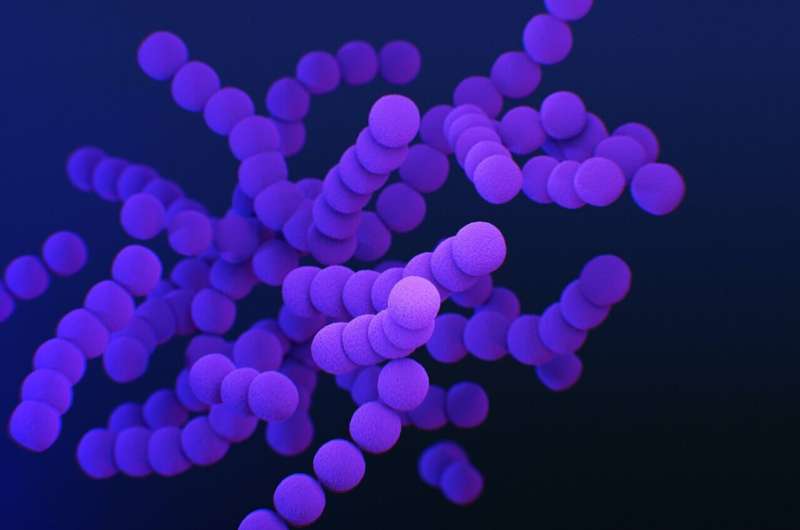Hybrid microbes: Genome transfer between different bacteria strains explored

Bacteria integrate genetic material from other bacterial strains more easily than previously thought, which can lead to improved fitness and accelerated evolution. This is shown in a recent study by biophysicists at the University of Cologne. The team analyzed genome transfer between bacteria of different lineages. The study was published in the journal PNAS.
In the experiment, the team brought one strain of bacteria into contact with DNA fragments from another strain. The uptake of foreign genetic material is known as horizontal gene transfer—in contrast to vertical gene transfer, by which genes are inherited from a parent cell of the same lineage. The results show that laboratory evolution through horizontal gene transfer can rapidly produce hybrid organisms of different lineages with extensive genomic and functional changes. "It is a bit like interbreeding modern humans and Neandertals," says Dr. Fernanda Pinheiro of the Institute of Biological Physics at the University of Cologne and author of the study. The bacteria readily integrated foreign DNA at many sites in the genome. Within 200 generations, the research team observed the exchange of up to 14 percent of the bacterium's core genes.
Horizontal gene transfer is an important factor in bacterial evolution that can operate across species boundaries. "Yet we know little about the rate and genomic targets of cross-strain gene transfer. Also, little is known so far about the effects on the physiology and fitness of the recipient organism," says Pinheiro. From a scientific perspective, hybrid creatures whose parents belong to different species raise fundamental evolutionary biology questions: What combinations of traits yield viable organisms? What are the limits of evolutionary processes when more than one species is involved in reproduction? "Our study makes an important contribution here," Pinheiro adds.
Is the uptake of genes random or does it follow a definite pattern? As the researchers observed, some functional units of the foreign genome were repeatedly imported and the resulting hybrid bacteria had higher growth rates. "This implies that cross-lineage gene exchange drives evolution very efficiently," Pinheiro says. Integrating foreign genes through horizontal gene transfer produces new combinations of genes yet preserves essential structures that make a cell viable. Thus, the study opens new perspectives for future work: to combine transfer evolution experiments and synthetic biology methods to engineer functional innovations.
More information: Jeffrey J. Power et al, Adaptive evolution of hybrid bacteria by horizontal gene transfer, Proceedings of the National Academy of Sciences (2021). DOI: 10.1073/pnas.2007873118
Journal information: Proceedings of the National Academy of Sciences
Provided by University of Cologne




















